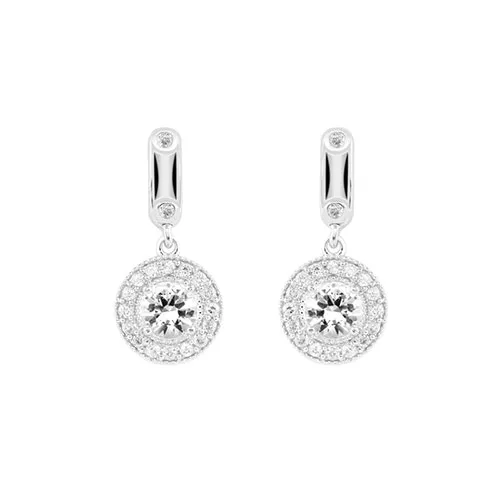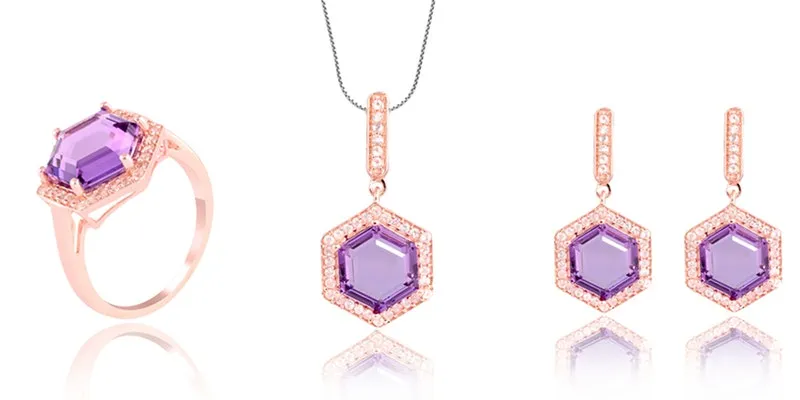Keeping up with trends in fashion, entertainment, food, and technology is an important part of living the so-called ‘millennial lifestyle.’ And, this applies to jewellery as well, despite it being a traditional concept in India.
And there are a large number of businesses vying for a piece of the pie. The gems and jewellery industry has more than 300,000 players in India, and most of them are small businesses, according to Indian Brand Equity Foundation data.
So when Rishabh Kothari started his silver jewellery business ‘Talisman’ in Jaipur in April 2018, it would have likely been just another drop in the ocean.
But Rishabh had a big advantage.
He was trained by his father, Sudhir Kothari, Co-founder of Gem India Exports, a stalwart in the jewellery trade sector. Rishabh also had 10 years of experience working with an Italian jewellery brand.

And when it was started, Talisman decided it would target women between 22 and 35 years of age living in tier I cities. The products would be high quality, affordable (in the Rs 1,500 – Rs 3,000 range), and would range from pendants, earrings and bracelets to rings and bangles.
Thus, with a clear objective, Talisman employed 22 skilled jewellery artisans and front-end developers to design and craft the jewellery. The plan was to sell the products on the Talisman website and deliver them pan-India with the help of delivery carriers FedEx, BlueDart, Delhivery, speed post, and more
This clear and well-prepared strategy worked wonders almost immediately as Talisman recorded monthly sales of Rs 5 lakh few months after launching.
And it is on track to grow bigger very quickly, according to Rishabh, who says, “We are targeting sales of Rs 10 lakh a month (which roughly adds up to over Rs 1 crore a year) within the next six to eight months, with a CAGR of about 60 percent.”
He adds that the main customer base so far has been from cities such as Bengaluru, Hyderabad, Delhi, Mumbai, Jaipur, Chennai and Ahmedabad.
In an exclusive interaction with SMBStory, Rishabh Kothari, Founder and CEO, Talisman, explains how things picked up so quickly for the jewellery brand and what its plans are for the near future.
Edited excerpts from the interview:
SMBStory: When working with an Italian jewellery brand, why did you decide to quit and start your own business?
Rishabh Kothari: Talisman, as a concept, was conceptualised during the time I was working with the Italian brand. I saw that the Indian market was flooded with cheap and low quality imitation jewellery.
So, I identified a huge gap in terms of high-quality precious metal fashion jewellery. There was an opportunity to make and sell precious fashion jewellery with quality that would match international standards.
Knowing I could leverage the strengths of parent company Gem India Exports to ethically procure the finest natural stones and use the purest forms of precious metals and alloys to create the fashion pieces, I set off on my own path
SMBS: How did you start Talisman and how did you design the product range?
RK: Co-founder Sambhav and I spent a year understanding and conceptualising unique designs of over 500 designs crafted in various 3D figures, such as animals, initials, etc. It was a tough task to define the design philosophy in the early days. We did not want to do the traditional ‘polki’ designs nor did we want to be in a market dominated with prestigious brands.

Our key ideology with designing is to be youthful, fun and graceful. We experimented with various colours of Italian high-quality enamel colours and semi-precious stones to offer our buyers something new and unique. We also came up with our unique clasp, which is an amalgamation of pure silver and stainless steel that took over 120 man days in prototyping.
We had the resources in place due to the rich history of the parent company Gem India Exports. Being a vertically-integrated business, it brought to us expertise in jewellery manufacturing, stone manufacturing, and operational techniques to achieve the desired quality and optimise production.
SMBS: Where and how are the jewellery pieces manufactured?
RK: Every Talisman piece is handcrafted at our design headquarters in Jaipur, India. The raw material is sourced from mines in Africa, South America, and China, enamel from Italy, and leather from turkey. We try to make our jewellery colourful, vibrant, and giving a confident look to the customers. Our team comes together to conceptualise pieces that can unfold memories and help customers express themselves in a fun and distinctive way.
We also have a design studio in Hong Kong. Both our studios are equipped with state-of-the-art rapid prototyping machines for 3D modelling and printing. We use recognised jewellery designing software for product development and each of the designs is first tested in our PD Cell for functionality and durability before it is brought to the mainstream. Our factory is overseen by jewellery workers proficient in every aspect of jewellery-making.
SMBS: How was the brand name and logo selected? What does it represent?
RK: Talisman means ‘charm’ and this coincides with the charm bracelets we offer. Every bracelet is personal to the customer as they pick pieces that reflect their own story. Global brands such as Pandora, Alex and Ani, which make personalised silver charm bracelets, inspired our range of charm bracelets.
The Talisman logo is a depiction of the coming together of the four most important elements of the universe: land, sun, sky and water. It connects with the brand’s vision of putting different components together to craft a unique piece, and highlights personalisation. From shopping to travel experiences, most sectors allow customers to add a personal touch, so why should jewellery be any different?
SMBS: How did Talisman diversify into different jewellery categories?

RK: We understand that wardrobes are ever-evolving. No wardrobe is complete without the ‘go-to’ jewellery pieces. So, it was important for us to complement our charm bracelets with other product categories.
Hence, we curated our product categories bearing in mind five essential things in a jewellery box. They are charm bracelets, everyday earrings, stackable rings, statement sets, and bangles. The bracelets have become a staple ornament given how easy they are to pair with almost any outfit.
The earrings are perhaps our most diverse collection, where we have every type of earring on offer. One of the top jewellery trends of the last decade, stackable rings have also become a fashion favourite.
SMBS: How are you using digital platforms to reach your customers?
RK: We sell on our website and deliver pan-India. The website is the first impression that the customer gets about the brand. We focussed and deployed a lot of resources on developing it as a place to get to know the brand and its proposition rather than where customers simply come to make purchases.
The platform is optimised for mobile devices, bearing in mind that most purchases are made on hand-held devices. We have also invested in customised features/widgets on our website, where a customer can create a customised charm bracelet.
While we are not on ecommerce marketplaces yet, we are aggressively using platforms such as Instagram, Facebook and YouTube for targeted marketing -our primary way to source customers. Our 10-second videos explaining the product or telling a story behind the charms play a major role in promoting the brand.
SMBS: What major challenges have you faced in manufacturing and other areas?
RK: We are in the race with our competitors such as fashion accessories player PipaBella, and silver jewellery brands such as Caratlane and Amrapali. We are still in our early days and every day brings a new challenge.
Maintaining quality is the biggest challenge, especially since we expect to match international standards. Managing human resources and ensuring we are helping them maximise their potential while not overworking them has also been a learning curve.

It is also tricky to educate the buyer about the differences between pure sterling silver jewellery and silver-plated jewellery. The marketplaces in general are flooded with silver-plated products which are misleading. When a person buys Talisman jewellery, we can assure pure sterling silver quality.
Further, we are in a very competitive industry which is still fragmented and unorganised, and this poses a challenge in terms of acquiring clients. Sales is not our only criteria; we want to instill confidence in our brand from the perspective of the buyers.
SMBS: What is the road ahead like? What are Talisman’s future plans?
RK: For the next three to four years, we will focus on what we are best at: jewellery and accessories. Now, we have women’s jewellery in our catalogue. We plan on adding 20 unique designs month-on-month, such as unique Rakhi designs.
Our immediate expansion strategy includes adding men’s range of products, such as cuffs, bracelets, and rings, and also bringing necklaces into our overall product range. We will also be introducing chic designs in gold moving forward that are very fashionable and minimal. We also aim to expand the team to about 75 members by the end of 2020.
We are currently operating within the Indian market and our customer base is spread across tier I cities. But in 2020 we aim to start selling globally, starting with an aggressive focus in prime markets such as KSA, UAE, Bahrain and Oman.
[“source=yourstory”]
